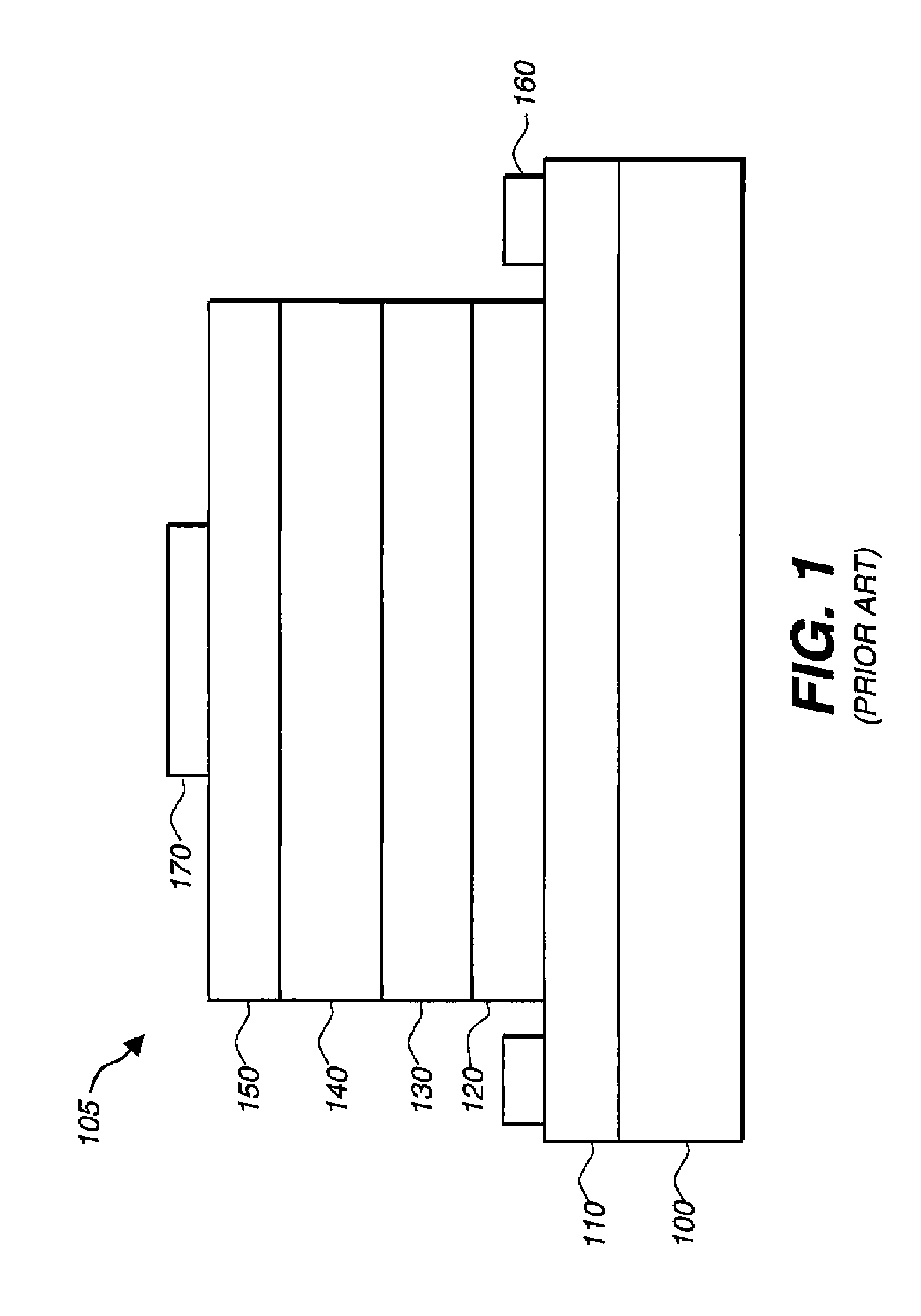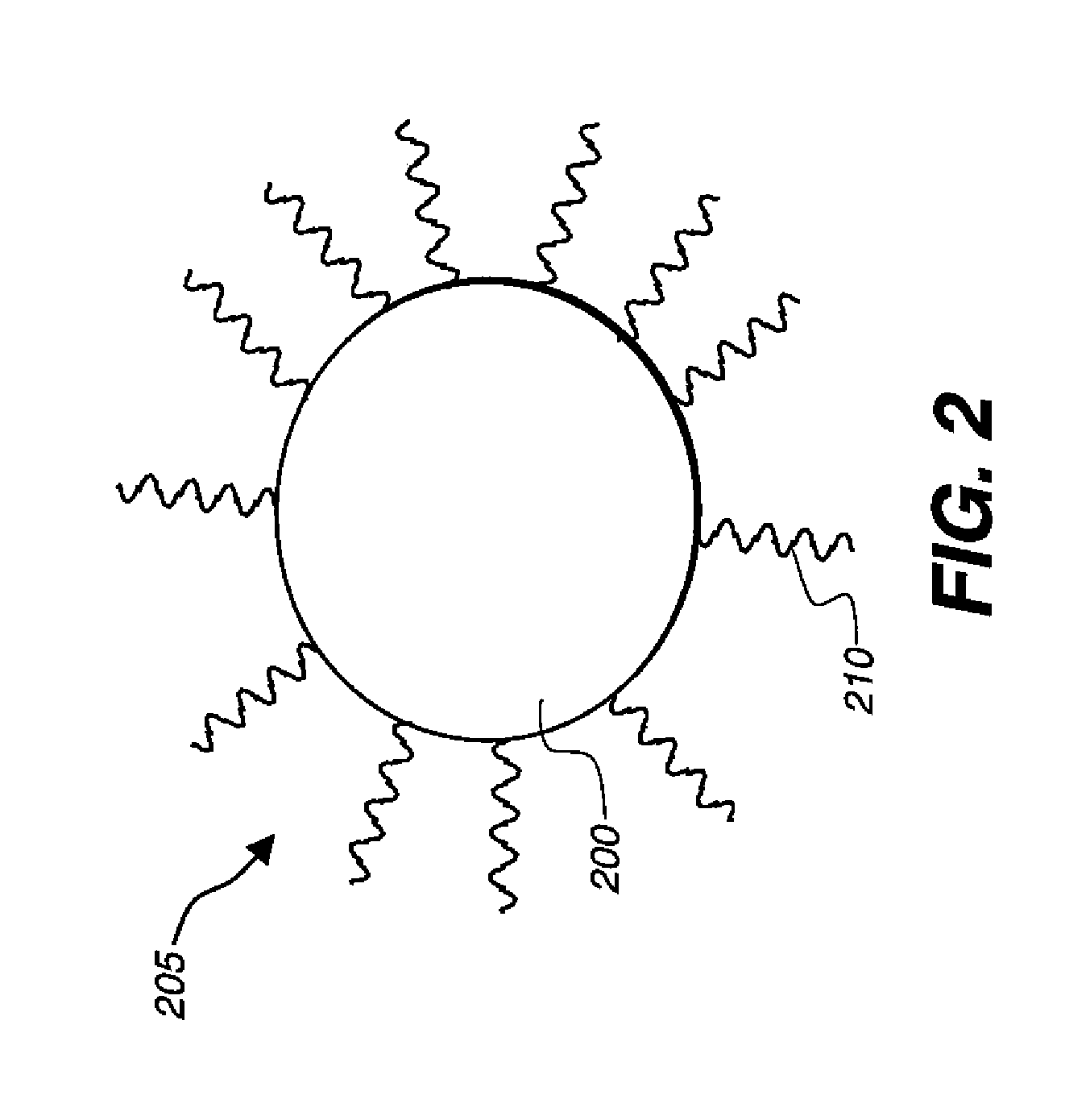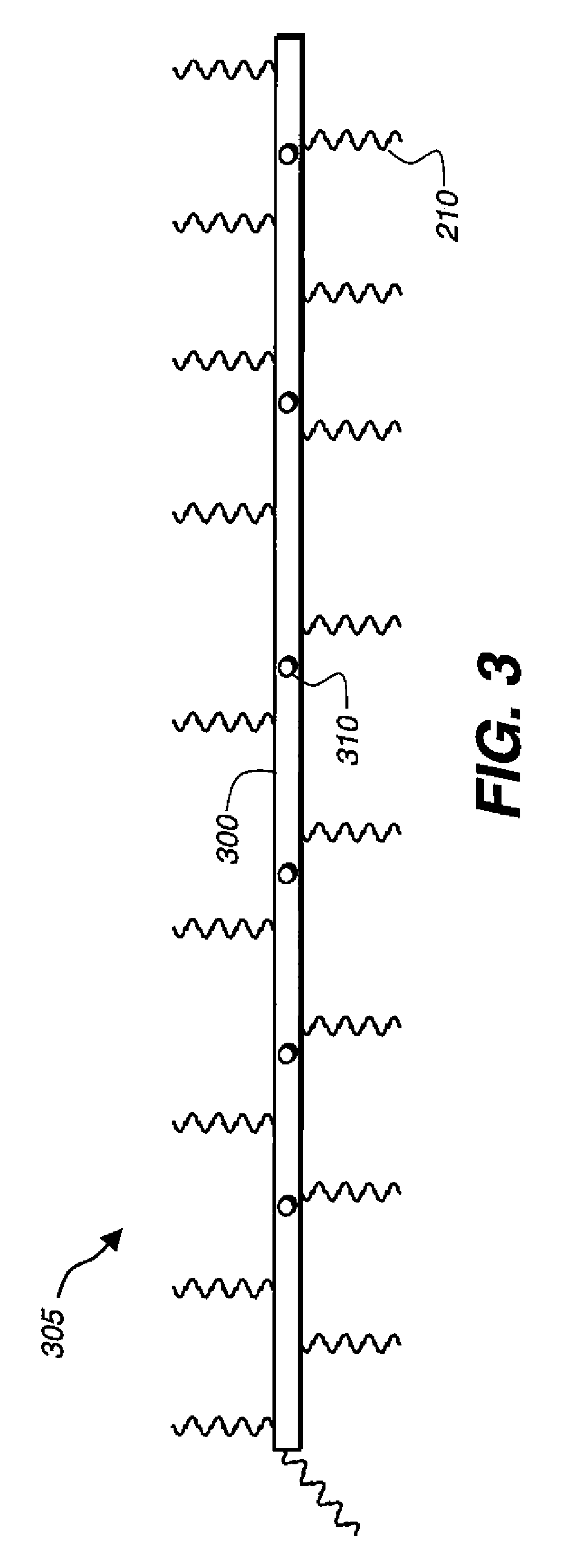Doped nanoparticle semiconductor charge transport layer
a technology of charge transport layer and doped nanoparticle, which is applied in the direction of semiconductor devices, crystal growth process, chemistry apparatus and processes, etc., can solve the problems of insufficient device performance for market needs, relatively high cost, and limited efficiency, and achieves low cost, limit the usefulness of these devices, and simple forming method
- Summary
- Abstract
- Description
- Claims
- Application Information
AI Technical Summary
Benefits of technology
Problems solved by technology
Method used
Image
Examples
example 1
[0034]Doped and undoped semiconductor transport layers were formed on glass substrates. The test system was CdSe, with and without In doping (a donor for CdSe which substitutes on the cation site). Undoped CdSe quantum wires 300 were formed by a procedure analogous to that by Pradhan et al. (N. Pradhan et al., Nano Letters 6, 720 (2006)). In our version the cadmium precursor is cadmium acetate and the Se precursor is selenourea, where equal molar (1.27×10−4 moles) amounts are used in the synthesis. The coordinating solvent for the growth is octylamine (OA), which is degassed at 30° C. for 30 minutes prior to its usage. In a small vial inside of a dry box, 0.03 g of cadmium acetate is added to 4 ml OA. After gently heating this mixture under constant spinning, the solution goes clear in 5-10 minutes. Next this mixture is placed in a three-neck flask and placed on a Schlenk line. At room temperature, the contents are subjected to three cycles of evacuation, followed by argon refilling...
PUM
| Property | Measurement | Unit |
|---|---|---|
| temperatures | aaaaa | aaaaa |
| temperature | aaaaa | aaaaa |
| temperature | aaaaa | aaaaa |
Abstract
Description
Claims
Application Information
 Login to View More
Login to View More - R&D
- Intellectual Property
- Life Sciences
- Materials
- Tech Scout
- Unparalleled Data Quality
- Higher Quality Content
- 60% Fewer Hallucinations
Browse by: Latest US Patents, China's latest patents, Technical Efficacy Thesaurus, Application Domain, Technology Topic, Popular Technical Reports.
© 2025 PatSnap. All rights reserved.Legal|Privacy policy|Modern Slavery Act Transparency Statement|Sitemap|About US| Contact US: help@patsnap.com



